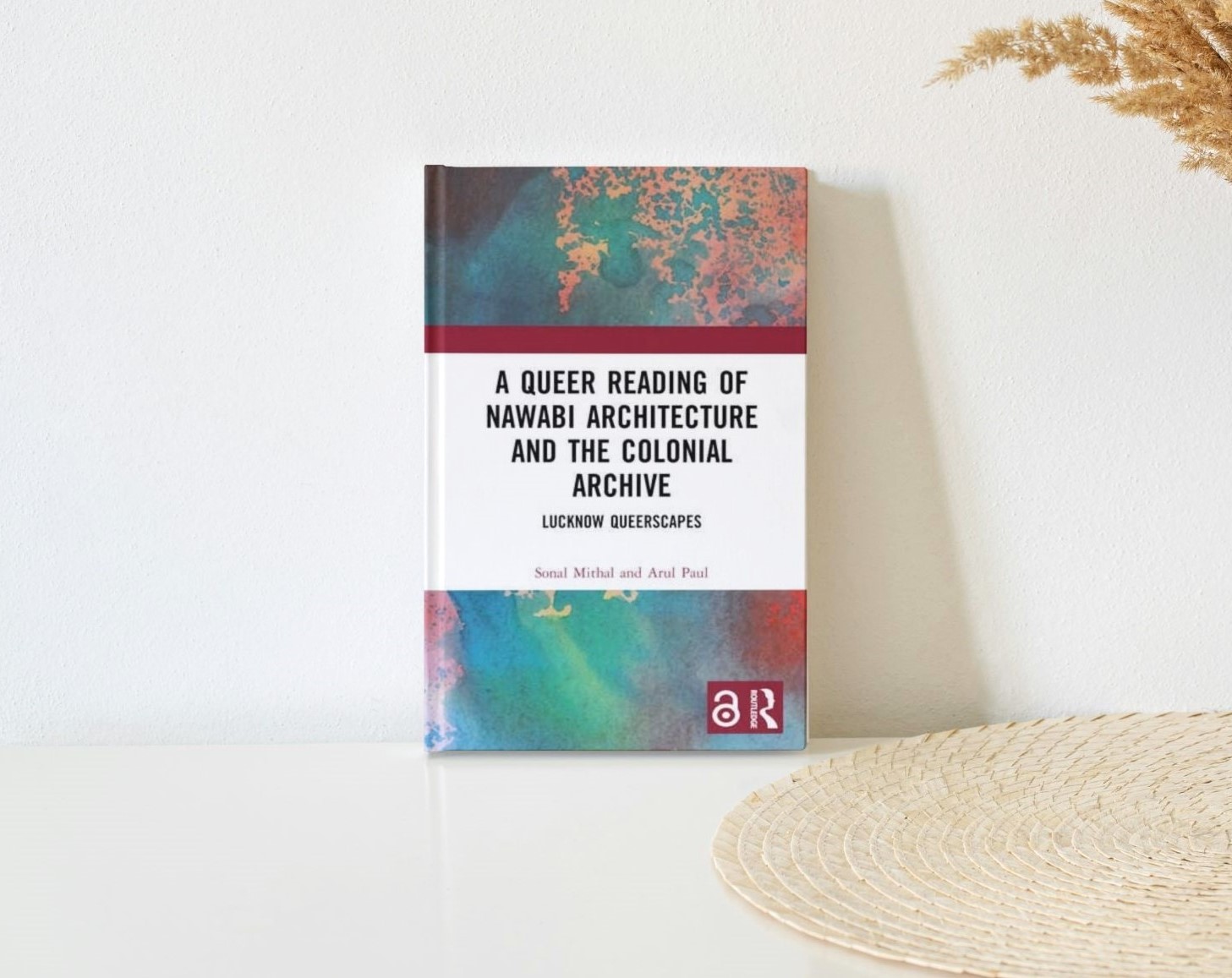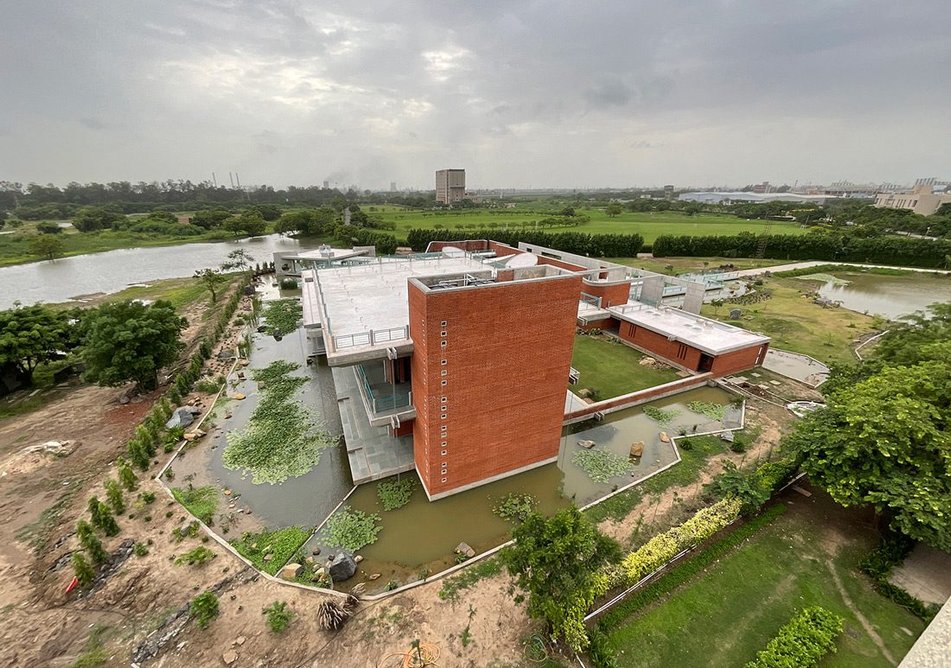
The Sri Aurobindo Integral Learning Centre (SAILC) located in Earthspace, Surat, west India, and designed by Studio Naqshbandi, is dedicated to Sri Aurobindo’s thought and vision, aspires to be global hub for the youth.
The Sri Aurobindo Integral Life Centre in Surat, West India, dedicated to Sri Aurobindo’s Integral yoga aspires to be a global hub for the youth to study and research his philosophy. The building invites one on a journey of discovery with its beguiling simplicity and layered experience.
The 2800 sq. mt. centre is surrounded by 2900 sq. mt. of self-sustaining bio-ponds, with the interplay between indoors and outdoors, helps create an ambience of peace and tranquillity. The simple material palette of the building consists of exposed load-bearing brickwork and RCC, with rough Kota stone flooring. The use of bioclimatic design strategies ensures thermal comfort.
Gallery:

© Mona Doctor-Pingel

© Mona Doctor-Pingel

© Mona Doctor-Pinge

© Mona Doctor-Pingel

© Ravi Vaghela

© Mona Doctor-Pingel

© Ravi Vaghela
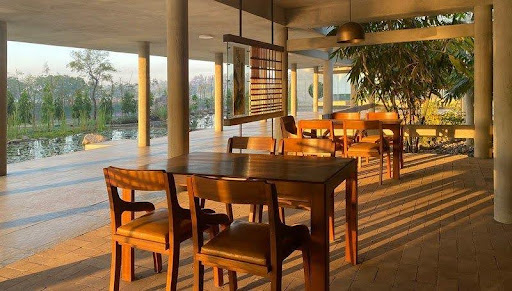
© Mona Doctor-Pingel
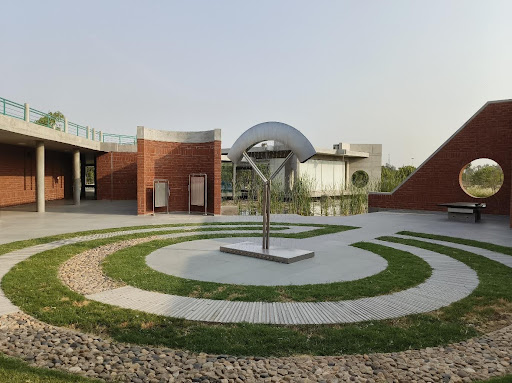
© Amit Tharu

© Mona Doctor- Pingel
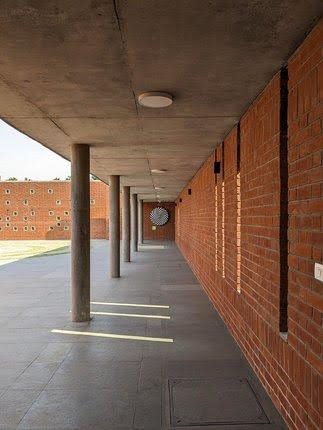
© Mona Doctor-Pingel

© Mona Doctor-Pingel
Also, watch an overview of SAILC by Studio Naqshbandi below:
Project Drawings:



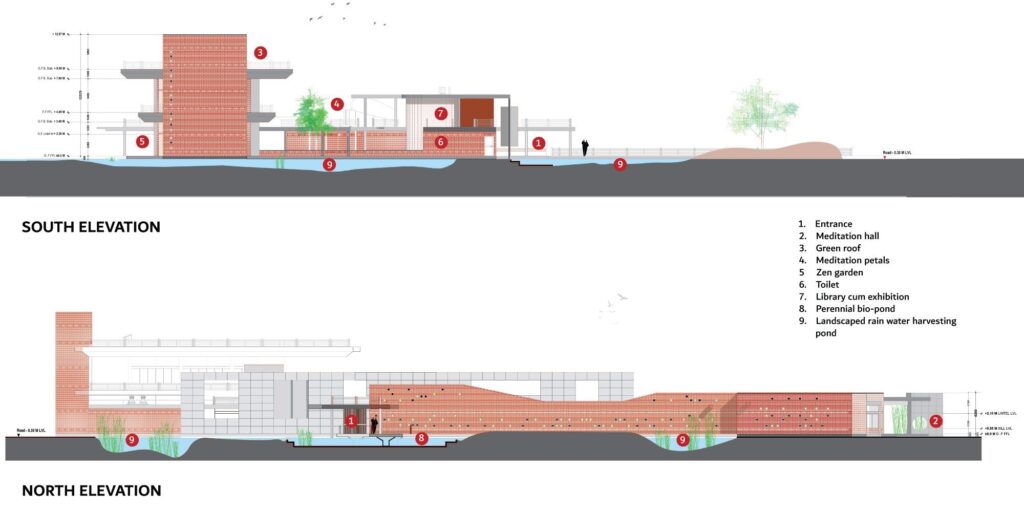
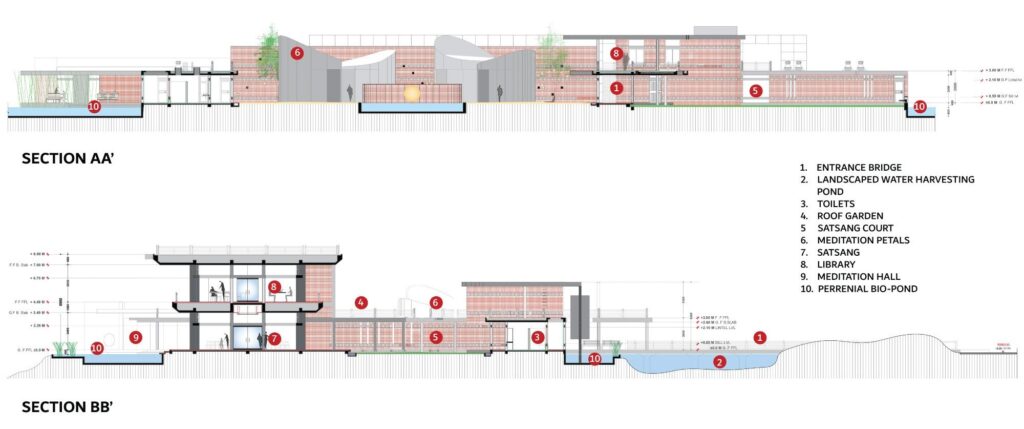

Project Details:
Name: Sri Aurobindo Integral Learning Centre (SAILC)
Location: Surat, Gujarat, India
Status: Completed (2023)
Client: HP Rama – Auro University, Surat
Site Area: 9200 sq. m.
Built-up Area: 2800 sq. m.
Landscaped Area: 2950 sq. m.
Typology: Educational Institution – University Campus
Designed by: Studio Naqshbandi
Team: Mona Doctor-Pingel, Alma Anna Bakhlina, Mihir Desai, Roshita Sudhir, Tushita Gandhi, Madhivanan G.
Consultants:
Structure: NPC Builders, Pondicherry
Contractor: Bhoomi Constructions, Ahmedabad + M/S DH Patel, Surat
MEPF: Artech Engineering, Ahmedabad
Wastewater treatment: Aqua Engineers, Auroville
Acoustics: Sound Wizards, Auroville
Art Installations: Shrishti Art Studio
Calligraphy: Poppo Pingel
Lighting: Light-Fish, Auroville
Photographs: Mona Doctor-Pingel, Mihir Desai, Amit Tharu, Ravi Vaghela





